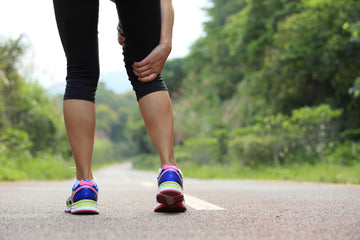How Overpronation Could Be Causing Your Heel Spurs
by footminders on Feb 17, 2009
Heel Spurs: Common Symptoms
Heel spurs are calcified tissue near the heel where the tendons in the foot attach. The main heel spur symptoms are sharp pain in the heel on rising and constant throbbing in the foot. These calcified tissues can dig into the inflamed flesh of the foot, causing pain. At first, the pain can be very sharp and will be present upon standing. As time passes, the sharp pain will become a dull aching feeling, but this can become a constant source of irritation for the patient. Heel spurs cause pain by poking at the flesh that has become very irritated and inflamed, a condition known as plantar fasciitis.
What Leads to Heel Spurs
A common trigger of heel spurs is when the the fibrous tissue between the toes and the heel of the foot named the Plantar Fascia becomes inflamed. This abnormal stress on the heel causes calcification of the soft tissue in the foot, causing plantar fasciitis. Reasons that this occurs include abnormal stress, excessive weight, age or poor foot function. When the tissue becomes more rigid, it is torn over and over by the daily use of the foot. As the tissue becomes inflamed, it results in heel spurs.
Diagnosis and Treatment for Heel Spurs
A foot x-ray is the only way to properly diagnose this condition. With an x-ray, your doctor can confirm that a heel spur has developed. Treatments include everything from simple foot elevation to relieve the pain to more extreme foot surgery to remove the spur, if your doctor feels it is necessary. Many people are able to lessen inflammation by applying gentle heat to the heel. By increasing circulation, the blood vessels dilate and the pain lessens. Many people discover that simply wearing orthotics can provide significant relief. These are designed to correct over-pronation and add support to the arches of the foot. By removing the strain on the plantar fascia, the tissues in the foot can heal correctly. Many orthotics come with additional heel pads that act as shock absorbers for the heel which help to immediately ease the pain. Also, diathermy is a form of physical therapy that can reduce inflammation. This process utilizes an electrical current to produce heat that will ease plantar fascia stress.
How to Prevent Heel Spurs
A way to avoid heel spurs is to properly stretch the tissues in the foot and calf before any rigorous exercise. By stretching these tissues, you create more flexibility which reduces the likelihood of plantar fascia stress. It is also very important to wear shoes that fit properly and provide ample arch support and cushioning to the foot. Orthotics are a smart addition to any shoe to help eliminate any abnormal stress on the plantar fascia, which could lead to heel spurs. Being mindful of our feet is a very important step in staying healthy. Healthy feet are a significant component to our long-term health.
The post How Overpronation Could Be Causing Your Heel Spurs appeared first on .
- abnormal stress,
- arch supports,
- bone spurs,
- flat feet,
- flat foot,
- Foot Care,
- Foot Health,
- foot pain,
- foot problems,
- heel bone spurs,
- heel spur symptoms,
- heel spurs,
- insoles,
- knee pain,
- leg pain,
- orthotic insoles,
- orthotics,
- over-pronation,
- plantar fascia,
- plantar fasciitis,
- plantar fascitis,
- pronation,
- shoe inserts,
- shoe insoles




